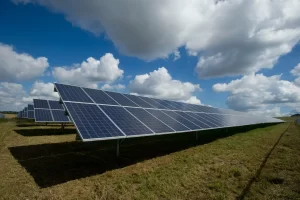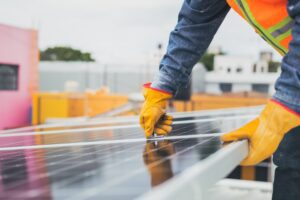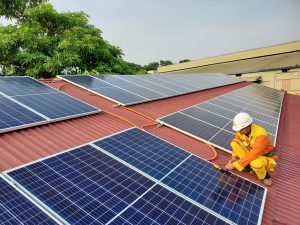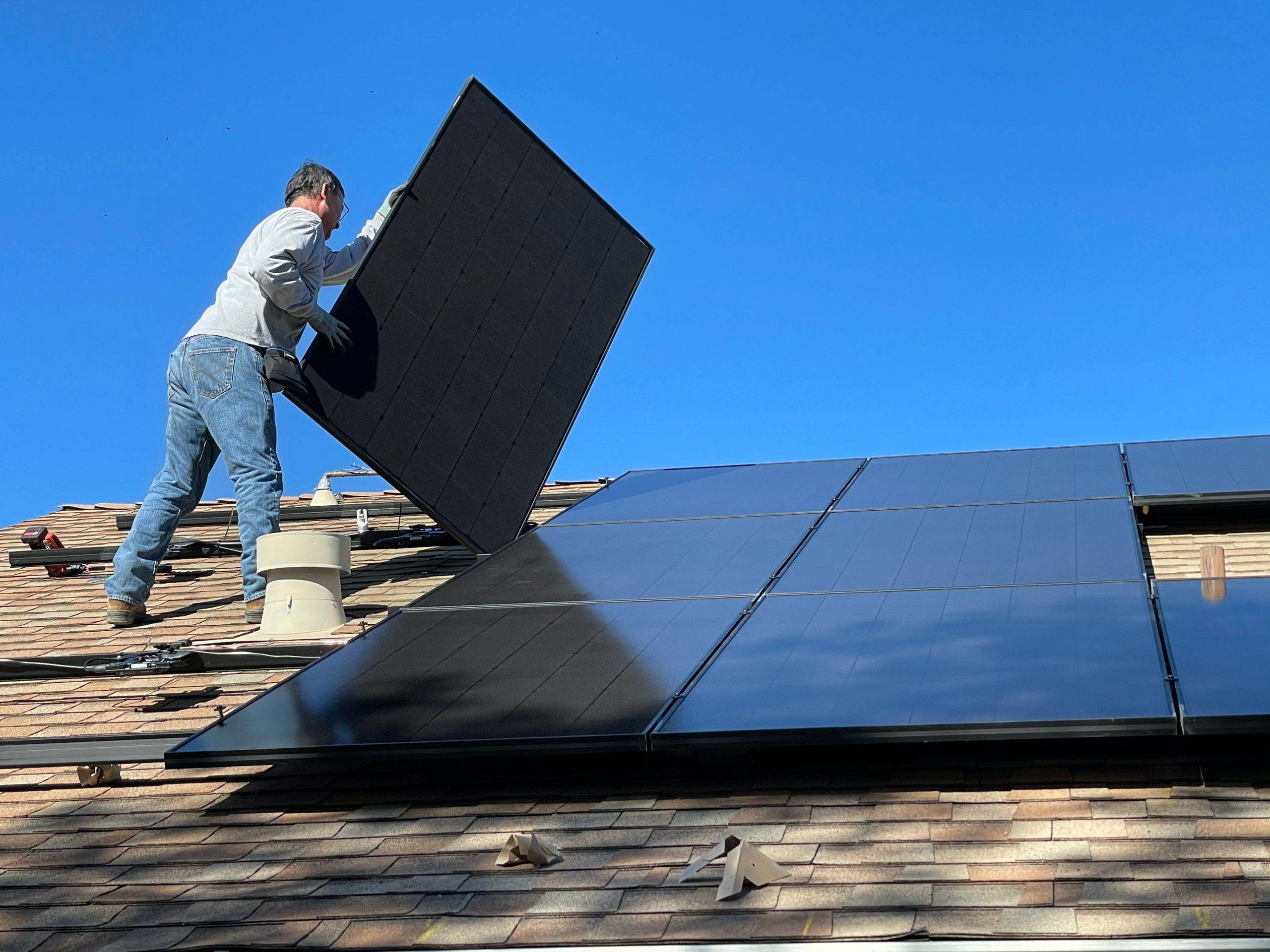Switching to solar energy is not only eco-friendly but also a smart financial move in the long run. Installing solar panels on your property can reduce your energy bills and contribute to a more sustainable future. If you’re considering a solar panel installation, follow these step-by-step instructions to ensure a successful and safe process.
Step 1: Assess Your Energy Needs
Before you begin, assess your energy needs to determine the size of the solar panel system required. Consider your current energy consumption, the available space for solar panels, and your budget. You may need to consult with a solar energy professional to perform this assessment accurately.

Step 2: Choose the Right Location
Selecting the ideal location for your solar panels is critical. The panels should receive ample sunlight throughout the day. The south-facing roof is often the best choice, but east and west-facing roofs can also work well. Ensure that there are no obstructions like tall trees or buildings that shade the panels.

Step 3: Secure Necessary Permits and Approvals
Check with your local government and utility company for any required permits and approvals. You’ll likely need to comply with building codes and regulations related to solar installations. Obtaining the necessary permits ensures your installation is legal and safe.
Step 4: Select High-Quality Solar Panels
Choose high-quality solar panels from a reputable manufacturer. Look for panels with good efficiency ratings and warranties. Your choice of solar panels can significantly impact the performance and longevity of your system.
Step 5: Find a Professional Installer
While some experienced individuals may opt for DIY solar panel installations, it’s highly recommended to hire a professional solar installer. They have the expertise to ensure a safe and efficient installation. Obtain quotes from multiple installers to compare prices and services.

Step 6: Design the Solar Panel System
Work with your chosen installer to design the solar panel system. They will consider factors such as panel placement, wiring, and inverter location. The design should optimize energy production while adhering to safety standards.
Step 7: Install the Solar Panels
Once the design is finalized, the installation process can begin. Here’s what typically happens during installation:
- Roof Preparation: The installer will prepare your roof by securing mounting brackets or racks to hold the solar panels.
- Panel Placement: Solar panels are carefully placed and secured to the mounting racks. Wiring connections are made to link the panels together.
- Inverter Installation: The inverter, which converts DC electricity from the panels into AC electricity for your home, is installed in a suitable location.
- Electrical Connection: The installer connects the solar panel system to your electrical panel. This requires professional electrical work to ensure safety and compliance.

Step 8: Testing and Inspection
After installation, the system undergoes thorough testing and inspection to ensure it’s functioning correctly and safely. This may include checking for any electrical issues and verifying that the panels are producing power as expected.
Step 9: Connection to the Grid
If your system is grid-tied (connected to the utility grid), your installer will coordinate with your utility company to establish a connection. This may involve installing a bi-directional meter to measure the energy your system generates and feeds back into the grid.
Step 10: Monitor and Maintain
Once your solar panel system is operational, it’s essential to monitor its performance regularly. Keep an eye on energy production, and if you notice any issues, contact your installer for maintenance and repairs.
Step 11: Enjoy Solar Savings
With your solar panel system up and running, you can start enjoying the benefits of clean and renewable energy. Watch your energy bills decrease and take pride in contributing to a more sustainable future.
Remember that solar panel installation is a long-term investment. Proper planning, professional installation, and regular maintenance are key to maximizing the benefits of your solar panels.
Solar Panel Installation FAQ
Considering a solar panel installation? Here are answers to some frequently asked questions to help you better understand the process and make informed decisions.
1. Why should I install solar panels?
Installing solar panels offers several benefits, including reduced energy bills, a lower environmental impact, potential tax incentives, and increased property value.
2. How do I determine the right system size for my home?
Assess your energy needs by examining your past electricity bills. Factors like available roof space and budget also play a role. Consulting with a solar professional can help you determine the ideal system size.
3. What factors should I consider when choosing a solar panel location?
Choose a location with maximum sun exposure throughout the day. South-facing roofs are often ideal, but east and west-facing roofs can work well too. Ensure there are no shading obstructions.
4. Do I need permits to install solar panels?
Yes, you’ll likely need permits and approvals from local authorities and your utility company. Compliance with building codes and regulations is essential for a legal and safe installation.
5. How do I select the right solar panels?
Choose solar panels from reputable manufacturers with good efficiency ratings and warranties. Your installer can help you make an informed choice.
6. Should I hire a professional installer or attempt a DIY installation?
Hiring a professional installer is highly recommended. They have the expertise to ensure a safe and efficient installation. DIY installations can be complex and may void warranties.
7. What’s involved in designing a solar panel system?
System design includes panel placement, wiring, and inverter location. The goal is to optimize energy production while adhering to safety standards.
8. How are solar panels installed on the roof?
Installation involves securing mounting brackets, placing the panels, and making wiring connections. Professional electrical work is essential for safety.
9. What is the role of the inverter in a solar panel system?
The inverter converts DC electricity generated by the panels into AC electricity for use in your home.
10. What happens during testing and inspection?
After installation, the system is tested to ensure it functions correctly and safely. Inspections may involve checking for electrical issues and verifying energy production.
11. How does my solar panel system connect to the grid?
If your system is grid-tied, your installer will coordinate with your utility company to establish a connection. This may require the installation of a bi-directional meter.
12. What maintenance is required for solar panels?
Regular monitoring of energy production is essential. Panels should be cleaned periodically, and any issues should be addressed promptly by your installer.
13. Can I use solar panels during a power outage?
In most grid-tied systems, solar panels automatically shut down during a power outage for safety reasons. However, you can invest in a battery backup system to use solar energy during outages.
14. What is the payback period for a solar panel installation?
The payback period varies depending on factors like system size, energy savings, and incentives. On average, homeowners can expect a payback period of 5 to 10 years.
15. Are there tax incentives or rebates for installing solar panels?
Tax incentives and rebates vary by location. Check with your local and federal governments to see if there are any incentives available in your area.
16. How long do solar panels last?
Solar panels typically come with warranties of 25 years or more. Their lifespan often exceeds this period, and with proper maintenance, they can continue producing energy for decades.
17. What is net metering, and how does it work?
Net metering allows you to earn credits for excess electricity your solar system generates and feeds back into the grid. These credits can offset your future energy bills.
18. Can I install solar panels on a flat roof or the ground?
Yes, solar panels can be installed on flat roofs or the ground using mounting systems designed for these scenarios. Your installer can recommend the best option for your situation.
19. Is solar panel installation environmentally friendly?
Yes, solar panel installation reduces your carbon footprint by generating clean, renewable energy. It helps combat climate change and reduces dependence on fossil fuels.
20. How do I get started with a solar panel installation?
To begin, consult with a professional solar installer. They can assess your specific needs, provide a quote, and guide you through the entire process, from design to installation.
Remember that each solar panel installation is unique, so it’s essential to tailor your approach to your specific circumstances and goals. Consulting with a professional is always a wise first step.
